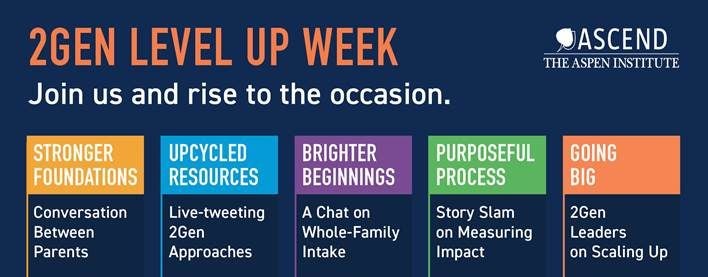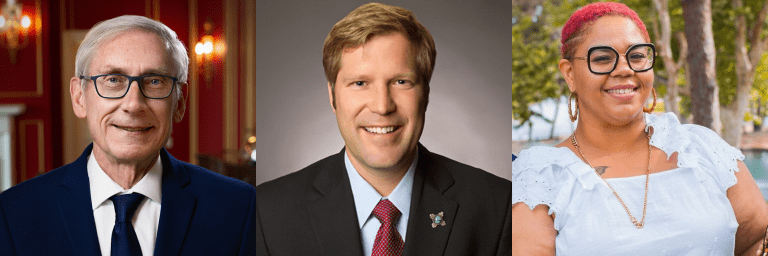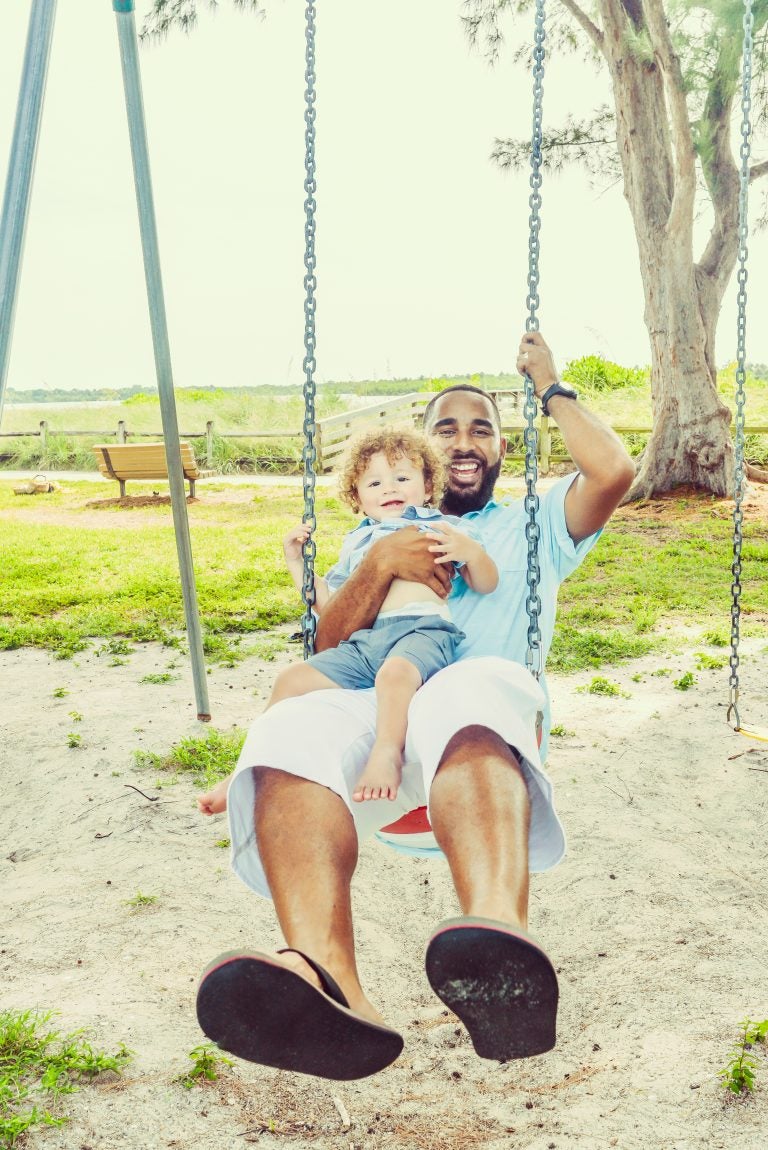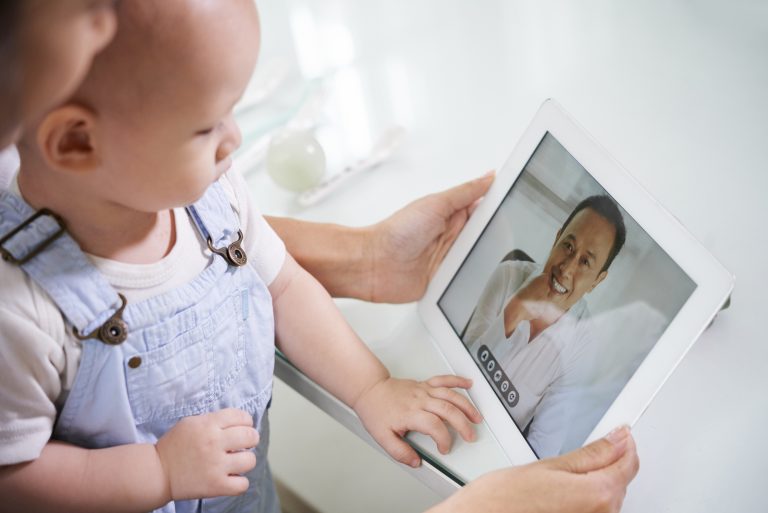WEBINAR: Framing 2Gen Approaches to Supporting Families
Have you ever felt that two-generation (2Gen) approaches to building family well-being should be a no-brainer, but that key audiences don’t quite “get it?” You’re not alone.
In this webinar, FrameWorks Institute Senior Advisor, Julie Sweetland shared recommendations for making a major frame shift – from a narrow focus on service delivery to a broader narrative about human development – and specific ways to execute that shift.
The presentation complemented a new playbook and a messaging guide released by Ascend and the FrameWorks Institute to support advocates, systems leaders, and families in talking about 2Gen. Lots of gems were shared with the more than 500 participants, including: Instead of broadly stating that a non-profit is “helping the whole family” or presuming an agency’s work is “breaking the cycle of poverty,” shift the narrative from charity-centric verbiage in exchange for words and phrases that emphasize partnership and personal development.
Ascend Managing Director Marjorie Sims and Assistant Director for Leadership and Design Lori Severens moderated the discussion. As some participants asked how organizations dedicated to supporting families with low incomes could appeal to donors without using words such as “poverty” and “less fortunate,” others wondered how to shift the focus their organization’s mission from the services they can provide families to the work they can do with families.
The webinar also became a catalyst for discussing 2Gen more broadly; additional audience questions from the webinar about framing and about the 2Gen approach and their answers are provided below.
Framing/Messaging Questions
- Many of the recommendations here are universal/general, how do you recommend including local context?
These recommendations are not specific to audiences, as you note. FrameWorks suggests that communicators use the recommendations as a filter, not a script. That is, please consider revising your messaging to bring it closer to the recommended shared language – and especially to avoid wording that could reinforce unproductive beliefs about poverty or draws from toxic narratives about dependency, charity, and the like. At the same time, keep the elements of your language and images that you have developed to resonate with your community.
- Ex: we are based in Hawaii with a distinctive culture, how can cultural norms factor into this messaging?
Cultural norms can and do differ in important ways across groups. In research FrameWorks conducted recently in Hawaii, for instance, we found that there was a more pronounced belief that extended family and close family friends would participate in children’s lives. We also found a more consistent belief that spending time outdoors was beneficial for families. If you have noticed localized mental models like these, by all means, use your context expertise!
That said, we would hate to see the 2Gen field underestimate the power of a shared analysis. Patterns of thinking across “different’ groups are more similar than we sometimes assume. We are concerned when we see mission-driven communicators borrow thinking indiscriminately from the communications approaches typical in politics and product marketing, which involve looking for differences (and therefore finding them.) Movement-building demands that we also look for commonalities. When we look for those, we find them, too.
- To what extent do families in crisis respond positively to the well-being framework? For a family with significant challenges, focusing on well-being may sound like a mismatch with their real and pressing material needs…
These recommendations have not been tested for use with program participants; they are designed for educating the public and policymakers about two-generation work. That said, if you want to adapt them for communications with families in crisis, you could consider talking about how the structure of their well-being is shaky or eroded right now, and the goal is to work with them to assess where repair or restoration is most needed, and then get to work on shoring it up. This strikes us as being both asset-based and responsive to the reality of a not-so-great moment in the life of a family.
- I would be interested to know if there are differences in framing between policymakers and practitioners or if those all fall under the “general public” population. We do seem to get good buy-in, especially when we describe it as the “whole family” approach, but any tools and tips for engaging public audiences are always nice to add to the toolbox.
FrameWorks recommends using the same substance for the general public and policymakers, but adapting at the level of style. Simply put: we recommend that everyone gets the same story, though the tellings will surely differ. The story we recommend: two-gen is a smart way to go about building a society that supports human potential and broad wellbeing. An elected official might get a short, snappy version with budget figures that point out the benefits of broader wellbeing to their district. A “tiny public” concerned with women’s issues might get example of how to connect the potential of girls with the potential of their mothers. A “tiny public” in a congregation might hear a sermon that talks about the wise builder who built his house on a rock – and how we have a shared obligation to ensure that well-being in our community is built on strong rock, not sand. Those are all the same big ideas. But the details, the embellishments, and the delivery differ quite a bit.
- Have you tested the words “intentionally and simultaneously”, as well as “developmental milestones”? Those seem a bit off.
We have not tested those words specifically. They are mid-level vocabulary words for sure. If you have concerns about the accessibility of the language for a particular context, you could consider plain-language alternatives like thoughtfully or at the same time.
- What would be helpful is to provide guidelines for practice behind the framework, too. Will you all be providing that support?
We have provided a short messaging guide to assist organizations in using the framework recommendations. We will share other tools as they become available.
- What sort of texts were the focus of your research (i.e. academic papers, grants)? Do you think these messages are clear and concise enough to be transferable to social media, website, and other marketing materials?
The vast majority of 2Gen materials we reviewed to discern the main points of the field were “white paper” types of documents, published by NGOs working on two-generation issues. The audience for these documents included other 2Gen practitioners and policymakers. We feel confident that the frames we have recommended – human potential, building well-being, and the like – can be adapted to many communications formats, and will be more effective than the major frames the field is relying on now. The general sample messages are too long for social media, obviously; we encourage and expect communicators to adapt them to various channels and contexts.
- How do we start to incorporate language like this when we have political leadership who are still focused on using deficit language (“vulnerable” “helping” “poverty” etc.)?
Our recommendation is to make like Nike and just do it. Or, if you prefer ancient unattributed proverbs: The best time to start reframing is twenty years ago; the second-best time is now.
- At the crossroads of public education, government and nonprofit – words like vulnerable, at-risk, and disadvantaged in reference to children and families are embedded in “institutional” language. What is the best way to collaborate with partners who are part of these institutions?
It’s always important to look at the impact of our policies – and so the social analysis of who is at-risk or who is disadvantaged remains critical. But there is just too much evidence about the thinking that those words bring up for non-specalists to keep that as our communications analysis. If you have close partnerships with those institutions, we encourage you to consider asking them to rethink their language. If you’re not in a position to ask that directly, we recommend leading by example and shifting your language, which will be a subtle invitation for them to do so, too.
- When changing the frame to a broader description of “well-being”, how do we respond to policymakers focused on measuring very specific outcomes (and often process outputs) that are not in alignment with a more comprehensive understanding of individuals and families?
You can work with the metaphor by comparing the specific outcomes to the building blocks or materials in the broader structure of well-being.
- In your report you mention that some audiences assume that they “are already doing this” – can you speak to framing or context that helps those audiences see the difference in this approach?
In projects focusing on human services professionals’ attitudes toward “implementation,” FrameWorks researchers found that innovative approaches were sometimes misunderstood or dismissed because professionals assumed they were “already doing it.” The recommendation to give clear, simple examples of how 2Gen asks for a change in practice is one way to work on this. For more ideas, check out our report on framing implementation: http://www.frameworksinstitute.org/assets/files/evidence_implementation/NIRNreport_justdoit_2015.pdf
- Would you not use the word “clients” and always use families, even if some clients are individuals?
The term client comes from a consumer/marketing perspective on the world. FrameWorks finds that consumerist language often primes people to make assumptions that aren’t a good fit for mission-driven work, and so we typically recommend that advocates replace the vocabulary of the marketplace with the lexicon of the commons. That’s a long way of saying – yes, we’d recommend saying families even if your participant is an individual. Participant, resident, or community member might also work.
- Really appreciate the work that went into this! It will be very helpful. I’m a little concerned the level of dialogue is SO high level, it makes it hard to actually engage in conversation. I’m looking for something more like an elevator speech level approach. Has the group worked to condense this?
We appreciate the candid feedback! The ideas can certainly be condensed or expanded as needed, and we encourage and expect that communicators will do so. We do recommend a fresh take on the idea of an “elevator speech.” Rather than rushing to download the key points before the short elevator ride is over, what if your goal were to inspire your fellow rider to linger for a deeper conversation once you got to the lobby? Our research predicts that the themes of human potential and building wellbeing will do just that – and the human services communicators who have tried this in the real world, in real elevators, report that the shift is a “game-changer.”
- Wouldn’t it help to also address what individuals need to do for themselves as a way to help folks change their view on the system and the messages you are using?
If you’re in a conversation where your audience insists on personal responsibility, you can “pivot” back to shared responsibility by acknowledging that families themselves are part of the construction crew that is building well-being. That said, we wouldn’t recommend proactively offering the individualist perspective. It’s like an invasive plant: once it gets going, it has a tendency to take over everything else.
General 2Gen Questions
- Can you share the demographic that you focus on for 2Gen? I assumed those looking for economic security. Or are you trying to reach all families?
- At Ascend, we are focused on the economic security and health of families with low incomes; however, the two-generation approach can be applied to building prosperity for families at all income levels.
- What about multi-gen? Like, when working with young mothers, their children, and the grandparents?
- The two-generation approach originally indicated a child-parent dynamic; however, the term’s meaning has expanded in recent years to refer to a child and their adults in their lives, which can include parents, grandparents and others. The terms multi-gen and whole family can also be used.
- Can you explain a little bit more about the continuum of 2Gen framework? Meaning, will a 2Gen framework of early child education and parent involvement necessarily move a family out of poverty?
- Research indicates that intentionally focusing on a child and the adults in their lives with targeted education, economic, and health supports can have a strong effect in building intergenerational cycles of opportunity and prosperity for the whole family. For example, research has shown that parents who complete a college degree double their incomes. And when parents see a relatively small increase in their income – even just $3,000 – research has found that children can see a 17% increase in their future earnings. See more evidence on our website here.
- I’m new to 2Gen work, could you share the definition you had on the previous slide?
- Two-generation (2Gen) approaches build family well-being by intentionally and simultaneously working with children and the adults in their lives together.
- Is Aspen Ascend planning to change the graphic of the 2Gen ‘gears?’
- Yes! We have refreshed the “core components” graphic and will be sharing a new version soon.
- Working in a government department that services people from beginning of life to end of life, 2Gen was originally seen as a smaller window for the programs that serve children and families. However, so many of families incorporate third (even fourth) generation members. Additionally, 2Gen really seems to provide a long-term solution that impacts later-life needs. Have you seen pushback on the name 2Gen or use other descriptors to prevent the “limiting” number of generations and if so, what approach have you used?
- We recognize families come in many shapes and sizes and believe that it is families themselves who should define who and what family means to them. The term “2Gen” is not intended to be limited to children and their parents. And in recognition of the diversity of families, we also reference “children and the adults in their lives”. Some of our partners, including leaders in several state governments, use the term “whole family” as another way to convey the approach.
- How can the 2Gen approach and messaging be aligned to meet the definition of “family” within the native/tribal communities?
- As outlined above, we focus on how families define themselves, which enables all families and communities to use their own definition of family.
- How many families have been approached? Are you mapping these families after 1 year or 2 year of 2Gen
- Please see the Frameworks Institute’s website for the methodology behind their research, which included both street intercept interviews and more in-depth testing. There are hundreds of organizations and public systems using 2Gen approaches. One of the 5 core principles of the approach is articulating and tracking outcomes for children and the adults in their lives together. Each organization has a different approach to their assessment and evaluation methodologies. Some of the most recently released quasi-experimental data on families is from CAP Tulsa. You can read their reports here: https:ascend.aspeninstitute.org/resources/the-effects-of-a-2gen-human-capital-program-on-childrens-outcomes-in-head-start/
- What are the differences between 2Gen approaches and a strength-based approach?
- 2Gen approaches are rooted in strengths-based approaches; a key value of the 2Gen framework is the resiliency of families, and the assets they possess as parents, students, children, and employees, among other roles. We would note that a strengths-based approach is a facet of applying a 2Gen lens to one’s work.
- 2Gen approaches are rooted in strengths-based approaches; a key value of the 2Gen framework is the resiliency of families, and the assets they possess as parents, students, children, and employees, among other roles. We would note that a strengths-based approach is a facet of applying a 2Gen lens to one’s work.
- We are frequently asked about specific examples of how 2Gen as an approach is making a measurable impact. How does the change in talking about economic change to “wellbeing” link to evaluation methods and the need to provide measurable evidence? (Sarah)
- The shift to focusing on “well-being” as a measure of economic stability does not change the evaluation methods and the need to provide measurable evidence that 2Gen approaches support well-being for families. We would recommend referencing Making Tomorrow Better Together (both versions for practitioners and policymakers are available on our website) and noting the various domains and measures for economic assets and health and well-being, which remain relevant with this shift in messaging. Later this year Ascend will also release Making Tomorrow Better Together 3, which expands on these outcomes and integrates this new messaging.
- Are there examples of states who have moved families out of intergenerational poverty, not just poverty?
- At least 35 states, DC and Puerto Rico are in various stages of implementing two-generation approaches to policy and practice. Ascend sites 12 states and DC as “target states” given their approach to this work: WA, OR, CO, UT, MN, HI, TN, MS, GA, MD, DC, and CT, highlighting their progression up the 2Gen Organization, Systems and Community continuums. Specifically, Ascend developed the 2Gen Community Continuum, which depicts seven stages communities and organizations move through in their 2Gen implementation.
- Descriptions of the seven stages in the Continuum, and the goals of the messaging and activities that were developed and tailored to appropriately reflect the state’s needs during each phase, can be found in the Community Guide to 2Gen Approaches.
Related Posts















